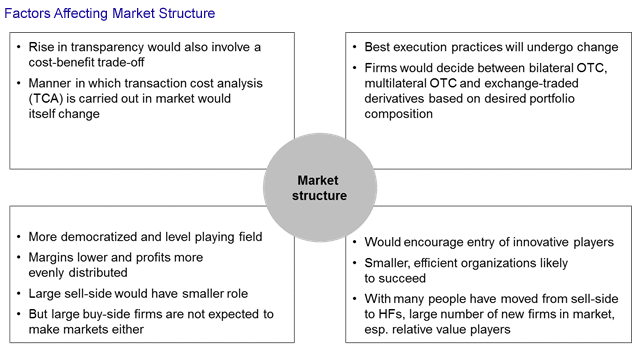Swap Execution Facilities: Lessons Learned from Early Experience
Abstract
The introduction of swap execution facilities has reinvented the OTC derivatives markets. From bilateral trading, these markets are moving to a multilateral trading environment where firms of all sizes will be able to access liquidity much more easily.
In the report Swap Execution Facilities: Lessons Learned from Early Experience, Celent evaluates two aspects of the new market environment: the trading volumes that have been observed on the leading SEFs in the last few months, and the change in market structure that a move to multilateral trading platforms could bring about.
These are early days in the development of a multilateral OTC derivatives market, but there are clear signs of where the liquidity lies, and the advantage held by the incumbent platforms.
Increasing transparency is expected to benefit the market as a whole, but it will also make it more difficult for buy side firms to operate due to their fiduciary responsibilities for maintaining confidentiality of client trades. Best execution practices are also expected to change, and firms will increasingly decide where to trade, in terms of bilateral and multilateral OTC trading or exchange-based derivatives trading, on the basis of the desired portfolio combination.

“The move toward multilateral platforms is expected to increase competition and reduce the pricing and spreads involved in trading OTC derivatives,” says Dr. Anshuman Jaswal, Senior Analyst with Celent’s Securities & Investments Group and author of the report. “However, we must remember that the cost of trading is expected to go up in the next few years as firms continue to deal with regulatory and infrastructural requirements.”
The report begins with a market overview that considers the trading volumes on the leading swap execution facilities. We also discuss the effect of the changes on the liquidity, pricing, and market structure of the OTC derivatives markets.

